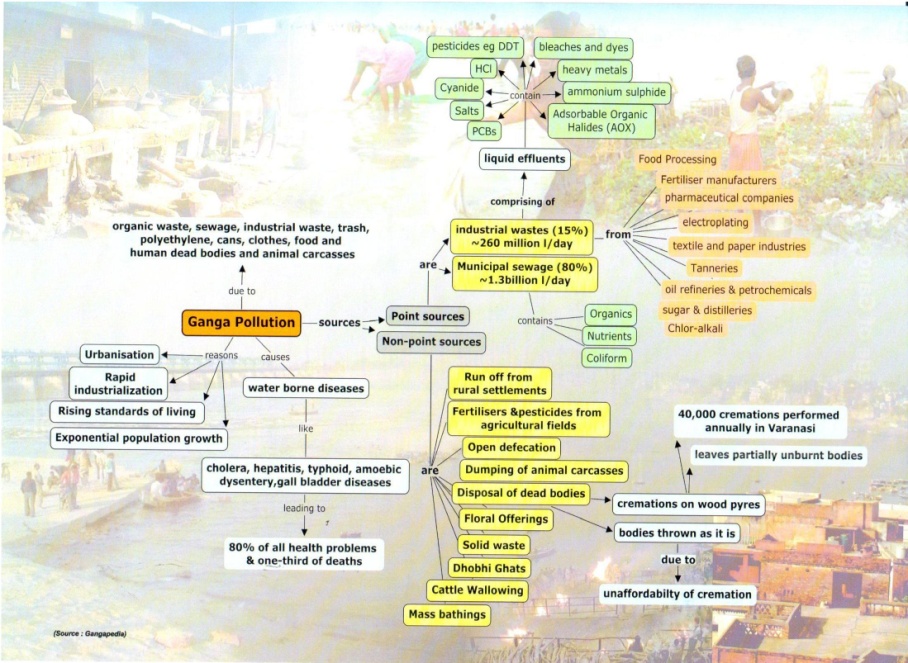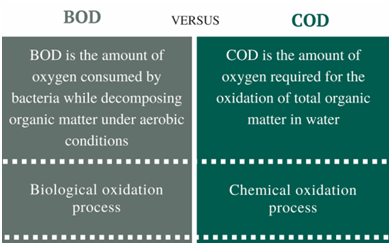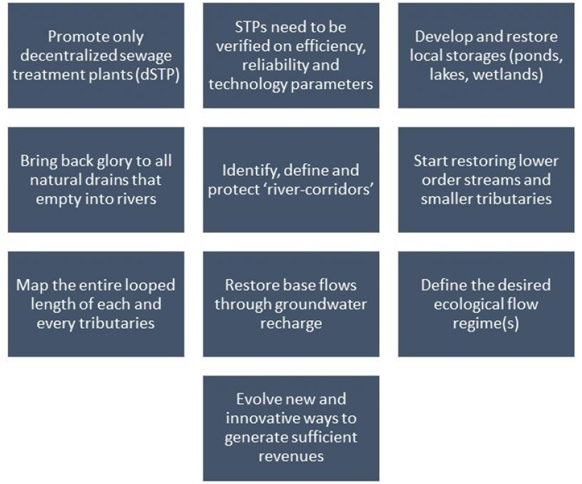Description

Copyright infringement is not intended
Context: Minister of State for Water Resources, said in the Rajya Sabha that the water quality of the river Ganga is clean enough for bathing and capable for supporting the river ecosystem for almost the entire stretch of the river.
- Dissolved Oxygen (DO), an indicator of river health is within the “acceptable limits” of “bathing water quality criteria”.
Findings of Central Pollution Control Board Report (2018)
- CPCB had identified 351 polluted stretches on 323 rivers based on monitoring results of 521 rivers in terms of Bio-chemical Oxygen Demand (BOD).
- It pointed out four polluted stretches on the main stem of river Ganga.
- There are five categories ranked 1 to 5, with 1 the most polluted and 5 the least.
- 2021 updated report findings:
- None of the stretches of the Ganga stretches were now in Priority Category I to IV
- Only two stretches are in Priority Category V with Biological Oxygen Demand (BOD)
- A comparison of median data of water quality parameters such as DO, Bio-chemical Oxygen Demand (BOD) and Faecal Coliform (FC) from 2014 and 2021 showed improvement.

Measures taken by government to clean Ganga:
- Based on the assessment of water quality, various measures are being taken both by the Centre and the States to prevent pollution of rivers and drains out–falling into them.
- River cleaning is a continuous process and the Central government assists the State governments and urban local bodies through schemes like ‘Namami Gange’ and National River Conservation Plan (NRCP).
- Ganga Action Plan: It was, launched in 1986 by the then Prime Minister Rajeev Gandhi, with the main objective of pollution abatement of the river Ganga.
- Bhuvan Ganga Portal: This App developed by ISRO enables public to collect and report information on various pollution sources that affects the water quality of river Ganga.
- Clean Ganga Fund: It was set up in 2015. The fund invites voluntary contributions from residents of the country and Non-Resident Indian (NRIs) / Person of Indian Origin (PIO) and others.
- Ban on Waste Disposal: The National Green Tribunal banned the disposal of any waste in the Ganga in the year 2017.
National Mission for Clean Ganga (NMCG)
- NMCG has been focusing on youth as part of its outreach and public communications efforts as they are the impellers of change.
- NMCG has tied-up with Diamond Toons to develop and distribute comics, e-comics and animated videos.
- The content will be designed with the objective of bringing about behavioral change amongst childrentowards Ganga and other rivers.
- The total estimated budget for the project is Rs. 2.26 Cr.
- Chacha Chaudhary can be useful in ground-level activation for Ganga rejuvenation.
- Initially, the comics will be launched in Hindi, English and Bengali.
Namami Gange Programme’
- It is an Integrated Conservation Mission, approved as ‘Flagship Programme’ by the Union Government in June 2014 with budget outlay of 20,000 Crore to accomplish the twin objectives of effective abatement of pollution, conservation and rejuvenation of National River Ganga.
- Main pillars of the Namami Gange Programme are:-
- Sewerage Treatment Infrastructure
- River-Front Development
- River-Surface Cleaning
- Bio-Diversity
- Afforestation
- Public Awareness
- Industrial Effluent Monitoring
- Ganga Gram
- Its implementation has been divided into
- Entry-Level Activities(for immediate visible impact),
- Medium-Term Activities(to be implemented within 5 years of time frame) and
- Long-Term Activities (to be implemented within 10 years).
Way ahead:
- Restoring ecological flows at every point along the Ganga’s course.
- Preventing all waste water, starting with sewage and industrial waste, from mixing with the river. Especially along the heavily polluted Kanpur and Varanasi stretches of Ganga.
- Promoting massive water conservation and water resource management. Example- rain water harvesting schemes, at both centralized and decentralized levels within the Ganga River Basin.
- The STPs need to be verified on efficiency, reliability and technology parameters by independent agencies (tech-efficiency-reliability verification).
- Pre-treatment units at STPs or sewage pumping stations, including solid-liquid separation units before faecal sludge enters the STPs.
- Countries like Malaysia have made it mandatoryfor STPs to have a pre-treatment unit.
- Better enforcement and monitoring, for efficient faecal sludge management .
10 critical steps to Ganga Revival

https://www.thehindu.com/news/national/most-of-ganga-clean-claims-jal-shakti-ministry/article65249606.ece

















